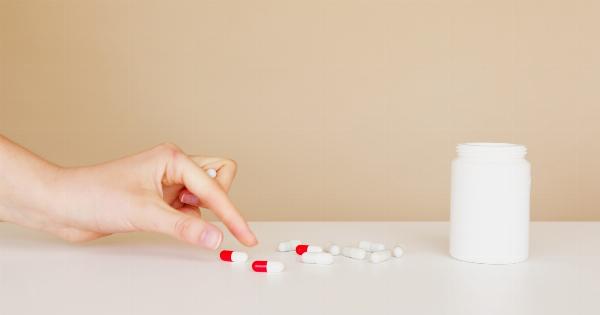Lymphoma is a type of cancer that affects the lymphatic system, a vital part of the body’s immune system. It occurs when abnormal lymphocytes, a type of white blood cell, begin to multiply out of control.
While there are various factors that contribute to the development of lymphoma, including genetics and exposure to certain chemicals, making certain lifestyle changes can help reduce the risk of developing this disease. In this article, we will explore ten lifestyle changes that can help lower the risk of lymphoma.
1. Maintain a Healthy Weight
Being overweight or obese can increase the risk of developing several types of cancer, including lymphoma. Therefore, maintaining a healthy weight through regular exercise and a balanced diet is essential.
Incorporating physical activity into your daily routine and consuming a diet rich in fruits, vegetables, whole grains, and lean proteins can help promote weight management and reduce the risk of lymphoma.
2. Limit Alcohol Consumption
Excessive alcohol consumption can weaken the immune system and increase the risk of lymphoma. It is important to limit alcohol intake and adhere to recommended guidelines.
Men should consume no more than two drinks per day, while women should limit their intake to one drink per day.
3. Quit Smoking
Smoking is a well-established risk factor for several types of cancer, including lymphoma. It is crucial to quit smoking and avoid exposure to secondhand smoke to reduce your risk.
If you need assistance in quitting smoking, consult with your healthcare provider for support and resources.
4. Protect Yourself from Infections
Some infections, such as the Epstein-Barr virus (EBV) and human immunodeficiency virus (HIV), have been linked to an increased risk of lymphoma.
Taking necessary precautions to protect yourself from infections, such as practicing safe sex and maintaining good hygiene, can help reduce the risk.
5. Stay Hydrated
Drinking an adequate amount of water is important for overall health and can help reduce the risk of lymphoma. Staying hydrated helps maintain a healthy lymphatic system, allowing it to function optimally in fighting off infections and diseases.
6. Engage in Regular Physical Activity
Regular exercise has numerous health benefits, including reducing the risk of cancer. Aim for at least 150 minutes of moderate-intensity exercise, such as brisk walking or cycling, each week.
Exercise not only helps manage body weight but also boosts the immune system, promoting better overall health.
7. Eat a Nutrient-Rich Diet
Consuming a nutrient-rich diet is crucial for reducing the risk of cancer, including lymphoma. Include a variety of fruits, vegetables, whole grains, and lean proteins in your daily meals.
These foods provide essential vitamins, minerals, and antioxidants that help protect against cancer.
8. Reduce Exposure to Environmental Toxins
Limiting exposure to environmental toxins, such as pesticides, herbicides, and industrial chemicals, can help reduce the risk of lymphoma.
When using chemical products at home or in the workplace, follow safety guidelines and use protective measures, such as wearing gloves or a mask.
9. Manage Stress
Chronic stress weakens the immune system and can contribute to the development of various diseases, including cancer. Engage in stress-reducing activities such as meditation, yoga, or mindfulness exercises.
Prioritize self-care and make time for activities that help you relax and unwind.
10. Get Regular Check-Ups
Regular medical check-ups and screenings are essential for early detection and prevention of diseases.
Consult with your healthcare provider and follow their recommendations for cancer screenings, including routine blood tests and imaging studies if necessary.
Conclusion
While there is no guaranteed way to prevent lymphoma, adopting a healthy lifestyle can significantly reduce the risk.
Maintaining a healthy weight, limiting alcohol consumption, quitting smoking, protecting yourself from infections, staying hydrated, engaging in regular physical activity, eating a nutrient-rich diet, reducing exposure to environmental toxins, managing stress, and getting regular check-ups are all important steps in reducing your risk of developing lymphoma.































